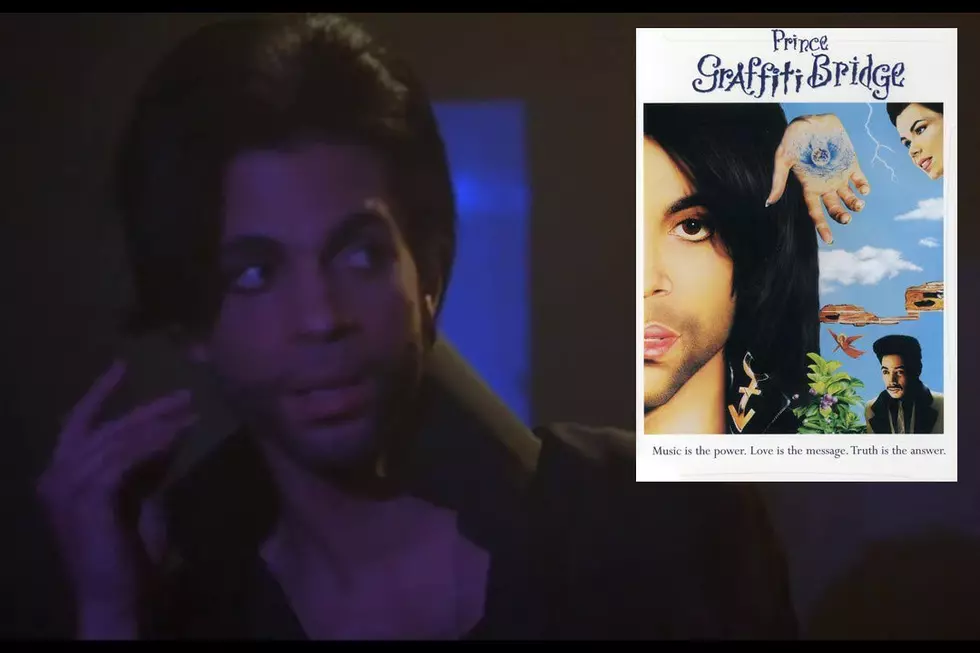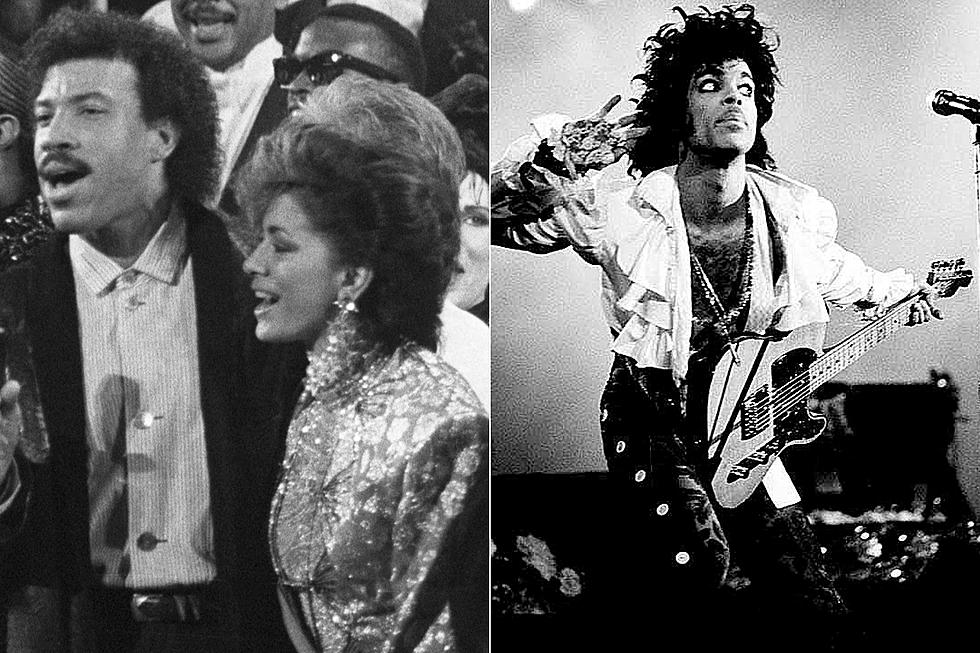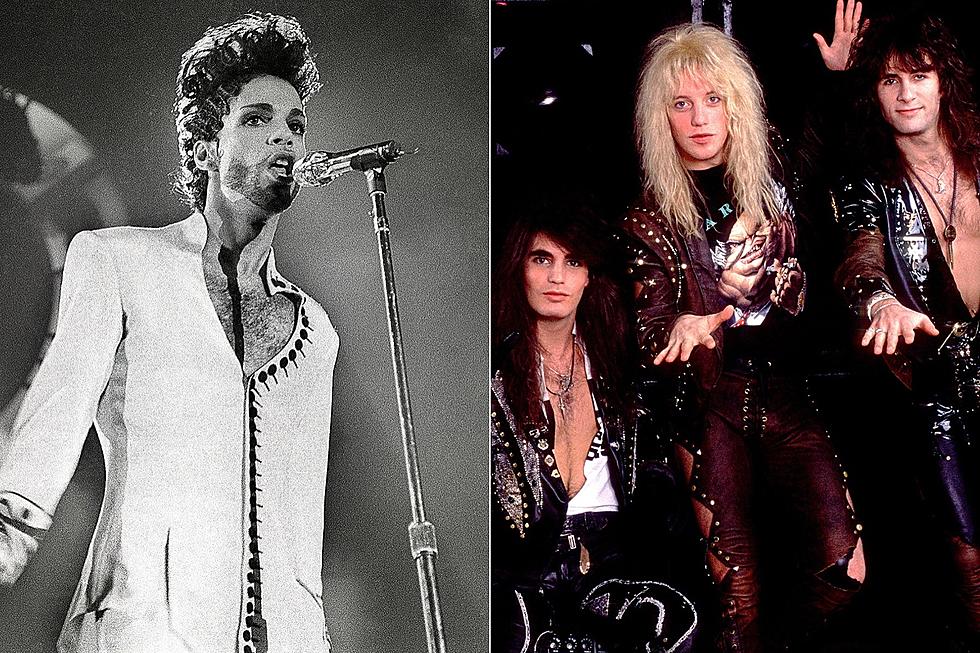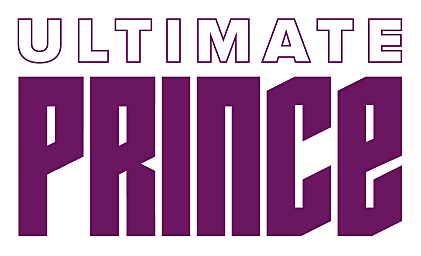
Was Prince’s ‘Graffiti Bridge’ Movie Really That Bad?: Roundtable
Is Prince's Graffiti Bridge movie really as bad as most people say it is? Are there any redeeming scenes? Was there a better way to write a Purple Rain sequel? We asked these and other burning questions to our writers. Here's what they had to say:
When did you first see Graffiti Bridge, and what was that experience like? How many times have you seen it since, and do you own it?
Matthew Wilkening: I was going to college in upstate New York when the movie came out. I had to drive a half-hour to get to a theater that was actually showing it. I went opening day, Friday night, 8 or 9 PM show. and there were just three other people in the theater. Not a good sign! And I realized pretty quickly the movie didn't deserve any larger of an audience. I think I've started watching it two or three other times over the years, wondering, 'Was it really that bad?' But I lose interest very quickly. I doubt I've watched the whole thing through in one sitting ever again. When the Blu-ray came out, I bought that, popped it in and skipped to just the performance scenes.
Erica Thompson: I’m probably the only Prince fan who saw Graffiti Bridge before Purple Rain. It was the ‘90s, I was a kid and it had Tevin Campbell in it, so my sister and I watched it dozens of times. I own it on VHS, and I played it on my VCR just a couple months ago.
Jacinta Howard: I first saw the movie in the theater as a kid – my mom took me. Says it gave her a headache. I think I fell asleep. Either way, I didn't have any real idea of what was going on in the movie at all (did anybody)? I mostly just remember Tevin Campbell and his song, "Round and Round." I'm pretty sure Tevin Campbell being there was the only reason I was even allowed to see it. I've only watched it in full that one time.
Patrick Moran: I went to see Graffiti Bridge at an Orlando theater with a group of friends a week before Thanksgiving 1990. We didn’t realize that we were just in the nick of time, because the movie was gone from theaters within two weeks. We all worked at a year-round haunted-house attraction where I was a part-time vampire, and my friends were a mix of goth kids and Wiccans. Their music tastes tended more towards Sisters of Mercy than Prince, but '90s goths and witches were a pretty androgynous bunch, and I think they responded to Prince’s charismatic gender fluidity as much as his undeniable talent. We were all psyched to see Prince’s second film as director, but much like the movie’s rain-swept production design, the screening was a damp fizzle. There were titters in the audience whenever Ingrid Chavez as the angel Aura murmured her portentous – and hard to hear – poetry, but nobody threw anything at the screen, so I guess you could call the experience a wash. I saw Graffiti Bridge one more time in the mid '00s, after it came out on DVD. This time around, I appreciated scenes that I had forgotten, particularly Tevin Campbell’s rousing rendition of “Round and Round” and Mavis Staples’ exhilarating turn in the spotlight with “Melody Cool.” I don’t own a copy of the movie.
Keith Creighton: I only saw it once, opening weekend at the theater – and then this past weekend on DVD (purchased it just for this). I was holding off buying the Blu-ray since it doesn’t even have the slim bonus features tacked onto the DVD (music videos). My first impression in 1990 was that it bummed me out. It felt like a 90-minute Paula Abdul video, but even “Opposites Attract” had some semblance of a plot and a more believable romance.
What's your quick review of the movie? Has it changed over time?
Wilkening: It's not a movie; it's a collection of videos. It would have been still not great but more palatable as a home video release, a la 3 Chains O' Gold. The story's a weak retread of Purple Rain, the sets look cheap, the acting is largely horrible. I don't like to pile on, but other than some of the actual music performance scenes Graffiti Bridge is simply not worth watching. It's one of the few things that actively tarnishes Prince's legacy.
Thompson: The story line and acting are underwhelming — not even Morris Day’s antics can save the production. However, the musical performances by Prince, Mavis Staples and Tevin Campbell are enjoyable. And it’s still an important film in Prince’s life and career, because it is an expression of his very real spiritual outlook, which he began exploring with Lovesexy.
Howard: I can barely remember anything that happens in this movie, because it's weird as hell and made no sense at all. All I remember is the Kid has great hair, and a pubescent Tevin Campbell randomly shows up to sing in a garage? Then his girl dies in a hit and run? And ... yeah, that's all I got. But hey, it's Prince doing Prince-like things, so A-.
Moran: It’s a bridge to nowhere, leaving the viewer suspended over the chasm of cringe-worthy cinema, still reaching for relevance and solid entertainment on the other side. At least the view is great: Prince is as photogenic and charismatic as an old-time movie star – a comparison he was consciously striving for in Under the Cherry Moon – and every single musical performance by Prince, Campbell, Staples and the Time is dynamite. Only George Clinton gets shunted off to the side, with a snippet of “We Can Funk” that feels like a throwaway. The energy soars in these sequences but then dips to a damp squib in the dramatic and comedic sequences. Morris Day is funny at first, but by the time he puts the moves on Chavez in a nightclub with an under-the-table assist by Jerome Benton, the humor begins to grate. The movie’s studio-bound, fantasy cityscape design is cool, but it was a mid-'80s MTV video look that was already dated when Graffiti Bridge debuted. Chavez is attractive and vacant, but to be fair, the only actor who’s successfully pulled off the kindly intervening angel act is Cary Grant in The Bishop’s Wife. And what’s with that damn floating feather?
Creighton: It seemed more like a capabilities video for Paisley Park as a production studio than a feature film. The artificial exterior sets were so claustrophobic, especially the plastic toy bridge that carries the name of the film. Prince, sorry, the Kid, never acknowledges the absence of Apollonia or the Revolution, and re-imagining the Time as two-bit, old-timey gangsters seemed quite off-brand and off-band. Had they abandoned the Purple Rain connections and just went with new characters, it may have worked as a musical fantasy home video or MTV special.
Watch the Trailer for Prince's 'Graffiti Bridge'
What's the best Graffiti Bridge scene?
Wilkening: One of the music sequences, but some of those are overblown, too. Maybe "Thieves in the Temple?" It seems like it received a higher quality of editing than the rest of the movie.
Thompson: This is a difficult question because there are actually a few great performances of songs. (Overall, the soundtrack is underrated.) However, I’ll go with the “Tick, Tick, Bang” battle scene, because it has two of the strongest elements present in the film: great music and ridiculousness.
Howard: I guess any scene with Prince's wonderful, flowing hair.
Moran: The songs are the whole movie. The Time’s funked-up incendiary “Shake,” performed on a stage that’s literally ringed with fire is a show-stopper, and Prince has never been as sexy as when he slithers like a snake and prowls like a panther amid a series of explosions on “Tick, Tick, Bang.” But the most dramatically successful number is “Thieves in the Temple.” With a moody vibe reminiscent of Purple Rain, and inventive shadow-play choreography, the sequence actually sells the sensuous spirituality espoused by Prince’s screenplay. The movie’s most successful and transgressive trick is that you completely buy into Prince’s near-blasphemous Christ-as-love-god shtick. It’s a messiah complex with sex appeal.
Creighton: There’s a sequence where both Morris and Jerome are wooing Glam Aura as they enter the club; it’s all done in one take, well-choreographed and utterly charming. Chavez’s two hairstyles make Glam and Tomboy Auras feel like different actresses played them.
What's the worst / most embarrassing scene?
Wilkening: In several scenes, somebody will be talking about how Prince has lost it, and can't reach an audience anymore. But meanwhile, at the exact same place and moment he's onstage playing this awesome music and the people in the club are fully digging it. It's as if he was trying to make one of those movies where the nerdy girl turns out to be really hot after a makeover, but he couldn't bear to be seen in the "before" stage. So, that's bad. But the worst is the scene where Morris Day tries to seduce Aura, which as I recall takes up two-and-a-half hours of this 90-minute movie.
Thompson: Spoiler alert – Aura, the guardian angel’s death, is the worst scene. She is promptly taken away by an unrealistic ambulance and, seconds later, Prince (as the Kid) is back onstage performing. It’s as if Prince ran out of patience, film, time or all of the above, as he was finishing the production.
Howard: This entire movie was pretty embarrassing, especially for a sequel to a certified classic, right? Doesn't seem fair to pinpoint one.
Moran: Unfortunately, “Thieves in the Temple” is followed by a scene that has all the comic subtlety of an episode of McHale’s Navy. As the song concludes, Day has spirited Chavez to his apartment, where he is planning to seduce her on the couch – with the ever-present assistance of Benton. Prince steals into Day’s apartment, switches off the lights and carries Chavez to safety. In the blackout, Day and Benton make out, presuming the other is Chavez. As the lights come on, they disentangle and leap to opposite sides of the couch in an overplayed bout of gay panic. It’s a weird moment in a Prince vehicle that preaches acceptance, a spiritual view of sex and a fair bit of gender bending on the star’s part. Then again, Day’s character is supposed to be clownish, so maybe the homophobia is supposed to illustrate that he’s out of touch.
Creighton: Morris and Jerome’s wince-inducing “no homo” scene after brushing against each other in the dark. Not only was it not funny, Prince holds the camera on them three beats too long. Clearly, they thought this was hysterical.
What would your sequel to Purple Rain have looked like?
Wilkening: Gotta break out of the local music scene. Prince and the Time are on a big tour together. Somebody in the band – for no reason, I'll say Jesse Johnson – lies about a song Prince really wrote, telling Morris that Prince got ahead in the race for worldwide fame by stealing Jesse's idea. That re-ignites the feud between Morris and Prince. A good villain has to truly believe they are doing the right thing, after all. Then you can base some pretty exciting musical scenes on the real-life competition and conflicts that took place when the two acts actually toured together, and there's a clear path for a happy climatic resolution. Where's my check?
Thompson: The Kid and the Time are on friendly terms, but both bands are contending with the changing musical landscape, dominated by hip-hop. A new husband with a baby on the way, the Kid is still struggling with fears of repeating his parents’ mistakes. The movie culminates with the birth of the Kid’s child, his new musical direction and his new role as a mentor to up-and-coming artists in the city. He also ceases to be called "the Kid."
Howard: Okay, so, the Kid is famous and now living in Los Angeles but he's the Kid, and he's all artistic and tortured – especially after his dad's death – and so he hates L.A., because the city's too plastic and isn't authentic enough for his art. But he's making big money now, and taking care of his mom back home with it, so he's torn about leaving. He's still dating Apollonia, whose career as a pop star is thriving under Morris Day's management. Morris and the Kid have reached a reluctant truce for her sake, even though the Kid and Apollonia are now drifting apart because they have different visions of success. Enter: Vanity. Wise and beautiful, Vanity befriends the Kid after she opens for him at a gig. She's a pure artist and he finds himself attracted to her. He even writes a song about her, but doesn't actually realize the song is about her until he sings it. Apollonia, who has made one of his gigs for the first time in forever, can immediately tell it definitely isn't about her. Love triangle! Drama ensues: Will the Kid stay with what's comfortable, or will he follow his art and his heart? The Kid ultimately decides to ditch L.A. and move back to Minneapolis to open an a boutique label and tour occasionally with Vanity at his side. Apollonia and Morris get together and stay in Hollywood. The end.
Moran: Like Casablanca and Saturday Night Fever, Purple Rain is one of those rare movies that should never have a sequel. But that didn’t stop people from trying. The weird thing is, when Graffiti Bridge was released in 1990, I had started writing and producing low budget horror and science fiction movies. I had some contacts in L.A., and I occasionally pitched them treatments for bigger-budgeted movies. One treatment I never sent was for a Prince vehicle called Mad, Bad and Dangerous. In it, Prince is Lord Byron, Day is poet Percy Shelley and Apollonia is Shelley’s young wife Mary. The trio summers in a castle in Geneva, and after a spooky night sharing ghost stories, Mary writes Frankenstein. Byron and Shelley go a step further and actually make the monster. Musical numbers, sexcapades and mayhem ensue. The elevator pitch was Purple Rain meets Rocky Horror. It probably would have been a worse movie than Graffiti Bridge.
Creighton: Five years after the triumphant end of Purple Rain, Morris Day and the Time are on top of the world. Morris hosts a popular late night TV show (think Arsenio with the Time as his house band). The Kid, meanwhile, is all by himself. His lady left him and the Revolution is over. But why? Morris throws the Kid a bone by offering him a musical guest spot on his show, if he can get his act together in time. In this gritty sequel, shot on-location in Minneapolis, Detroit, Cleveland and small towns on the way to New York, the Kid battles his demons, finds his voice and rebuilds his life and his band, one musician, one city and one song at a time. The title comes from something Aura (in a much smaller role) tells the Kid in his dream, “To find your way forward, look for the Graffiti Bridge.” Is it a place? Part of a song? Each stop of the Kid’s quest leads him closer to the answer. Big reveal: Morris reveals that “The Kid” is only a nickname – in the triumphant finale, Morris proudly and officially introduces “Prince and the New Power Generation.”
What Happened to the Artists of Paisley Park Records?
More From Ultimate Prince









